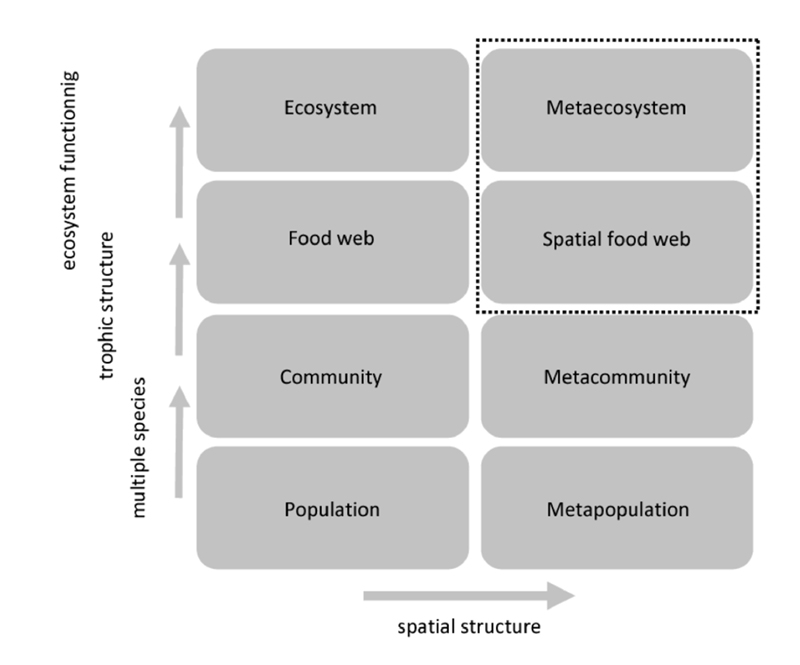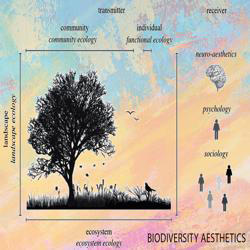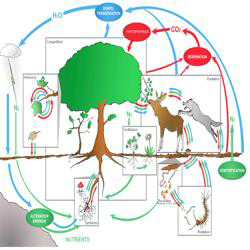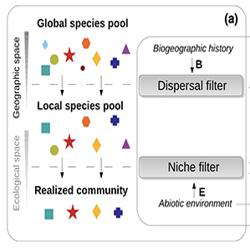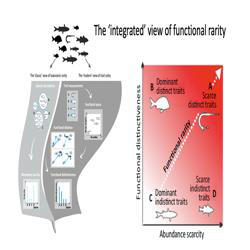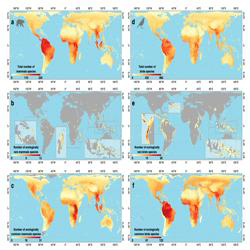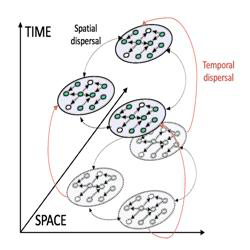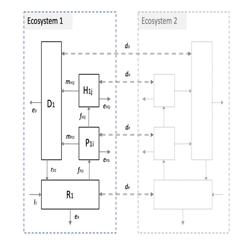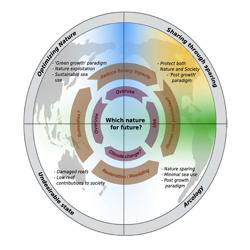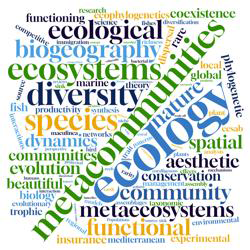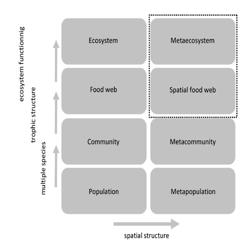TROPHIC BIOGEOGRAPHY & METAWEB
Studies on spatially structured food webs, are complex because they incorporate both trophic and spatial structure as the network of species interactions is no longer strictly local, and depends on the structure and composition of neighboring locations. They are deeply rooted into the seminal work by Huffaker (Huffaker 1958) and have developed into an area that can perhaps be called food web metacommunity ecology (Amarasekare 2008). This area seeks to link population dynamics with the spatial effects of dispersal and patch heterogeneity on community phenomena such as species coexistence, species diversity, and community stability. More recently have the spatial trophic structure been incorporated at the biogeographical scale into the trophic theory of island biogeography (Gravel et al. 2011) which open new perspective to implement food web metacommunity ecology at the biogeographical scales where most to the predictive models of species distribution are now developed. In doing so, we will gain a deeper understanding of how multi-trophic communities (metaweb) are structured across multiple scales.
Amarasekare P. (2008). Spatial Dynamics of Foodwebs. Annual Review of Ecology and Sysematics, 39, 479–500. Gravel D., Massol F., Canard E., Mouillot D. and Mouquet N. (2011). Trophic theory of island biogeography. Ecology Letters, 14, 1010-1016, doi:10.1111/j.1461-0248.2011.01667.x Huffaker C.B. (1958). Experimental studies on predation : dispersal factors and predator-prey. Hilgardia, 27, 343-383.
Most of my research program on spatially structured food webs web has been concerned with modeling species dynamics in trophic metacommunities, developing the trophic theory of island biogeography and neutral theory of trophic interactions. This research has also resulted in producing review papers and integrated approaches.
Back to Nicolas Mouquet homepage